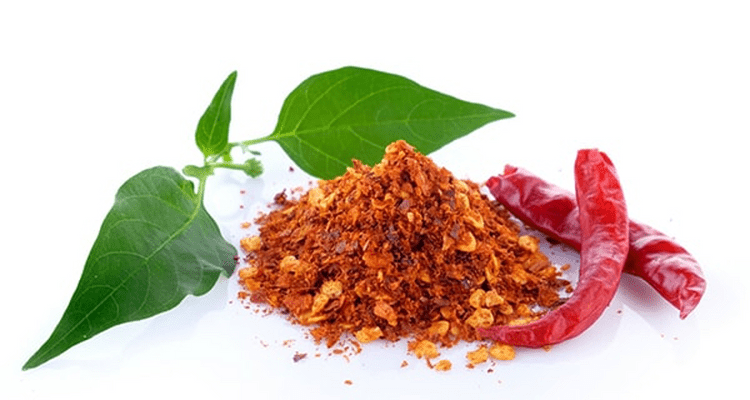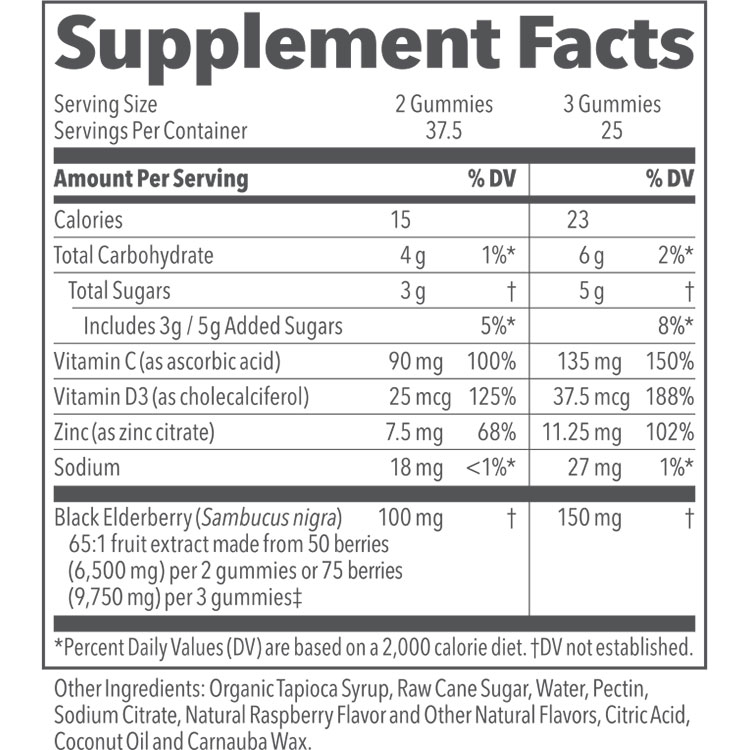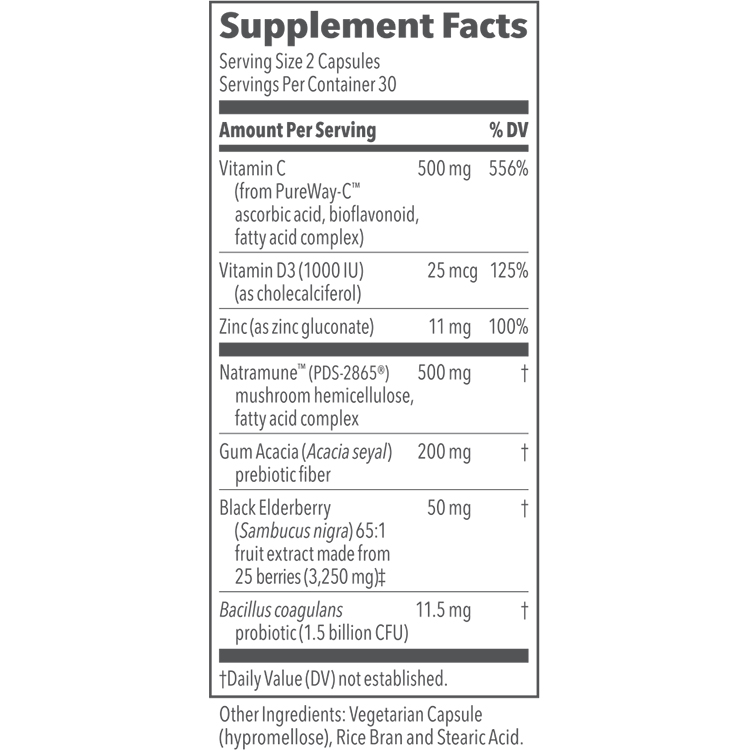BACKGROUND
Ingredient Type: Botanical
Also Known As: Capsicum annuum, Cayenne pepper, Cayenne fruit

Capsicum annuum is an annual herb growing up to 1m in height. It is native to the tropical Americas and widely cultivated throughout the tropics and elsewhere. There is confusion regarding the classification of Capsicum species. Currently, all varieties of mild and hot peppers are considered as the fruits of a single species, C. annuum. Occasionally people classify the pungent varieties of pepper (Chile peppers or cayenne peppers) as C. frutescens and the milder-flavored sweet peppers (bell peppers, sweet peppers, and green peppers) as C. annum. Most botanists agree that they should properly be regarded as varieties of a single species (Rosengarten, 1969)(1).
TRADITIONAL USES
Cayenne pepper is used in countries such as Italy and China to help treat circulatory problems. The Consumer Health website notes that cayenne pepper is also referred to as the “central circulatory stimulant.” It is believed that the ability of cayenne to cleanse the whole body and help improve health conditions such as arthritis, is due to a substance known as capsaicin. Capsaicin is also known to have pain-relieving properties (3).
Capsicum has been used for decades as a catalyst for other herbs. Capsicum stimulants circulation and enhances blood flow, it is considered food for the circulatory system.
It is also used for dyspepsia, flatulence, colic, diarrhea, and cramps. It is also used for poor circulation, excessive blood clotting, hyperlipidemia, and preventing heart disease. Capsicum is also used for burning mouth syndrome, exercise performance, irritable bowel syndrome (IBS), joint pain, peptic ulcers, weight loss, seasickness, toothache, swallowing dysfunction, alcoholism, malaria, and fever.
WHAT DOES SCIENCE TELL US?
Capsaisin-induced vasodilation may be beneficial in conditions such as cluster headache and coronary artery disease. Topically, capsaicin appears to cause arterial vasodilation due to increased nitric oxide release which improved ischemic threshold during an exercise test in patients with stable coronary artery disease (16). Furthermore, capsaicin seems to have antiplatelet effects in laboratory research and can decrease blood coagulation (17). Some clinical research, however, shows that capsaicin does not impact platelet aggregation (18).
SAFETY
Cayenne is considered safe when used orally in amounts typically found in food or when used topically and appropriately (7). Capsicum has Generally Recognized as Safe (GRAS) status in the US (6). No serious side effects have been reported in clinical trials.
Interactions:
Moderate Risk (use with caution): Anticoagulant/Antiplatelet drugs; Anti-diabetes drugs, Antihypertensive drugs; Aspirin, Cefazolin, Cocaine, Theophylline; Warfarin
Theoretically: Anticoagulant/Antiplatelet herbals and supplements, Coca (in cocaine), Hypoglycemic potential, Iron
REFERENCES
- https://www.mdidea.com/products/new/new00502.html
- Rapoport AM, Bigal ME, Tepper SJ, Sheftell FD. Intranasal medications for the treatment of migraine and cluster headache. CNS Drugs 2004;18:671-85
- http://www.livestrong.com/article/403198-what-herbs-are-good-for-circulation-in-the-veins/
- Wu, F., Eannetta, N. T., Xu, Y., Durrett, R., Mazourek, M., Jahn, M. M., and Tanksley, S. D. A COSII genetic map of the pepper genome provides a detailed picture of synteny with tomato and new insights into recent chromosome evolution in the genus Capsicum. Theor.Appl.Genet. 2009;118(7):1279-1293
- Govindarajan, V. S. Capsicum–production, technology, chemistry, and quality–Part II. Processed products, standards, world production and trade. Crit Rev.Food Sci.Nutr. 1986;23(3):207-288
- Electronic Code of Federal Regulations. Title 21. Part 182 — Substances Generally Recognized As Safe.
- https://www.accessdata.fda.gov/scripts/cdrh/cfdocs/cfcfr/CFRSearch.cfm?CFRPart=182
- Hallmann, E. and Rembialkowska, E. Characterisation of antioxidant compounds in sweet bell pepper (Capsicum annuum L.) under organic and conventional growing systems. J Sci Food Agric. 2012;92(12):2409-2415.
- tander S, Luger T, Metze D. Treatment of prurigo nodularis with topical capsaicin. J Am Acad Dermatol 2001;44:471-8Higashiguchi, F., Nakamura, H., Hayashi, H., and Kometani, T. Purification and structure determination of glucosides of capsaicin and dihydrocapsaicin from various Capsicum fruits. J.Agric.Food Chem. 8-9-2006;54(16):5948-5953. View abstract.
- ISSEKUTZ, L., HAJDU, P., and PORSZASZ, J. [Relation between the burning property of capsaicin and its effect on respiration and blood circulation.]. Acta Physiol Hung. 1954;Suppl. 6:107. View abstract.
- Lee, C. Y., Kim, M., Yoon, S. W., and Lee, C. H. Short-term control of capsaicin on blood and oxidative stress of rats in vivo. Phytother.Res. 2003;17(5):454-458. View abstract.
- Lembeck, F. Columbus, Capsicum and capsaicin: past, present and future. Acta Physiol Hung. 1987;69(3-4):265-273
- Limlomwongse, L., Chaitauchawong, C., and Tongyai, S. Effect of capsaicin on gastric acid secretion and mucosal blood flow in the rat. J.Nutr. 1979;109(5):773-777. View abstract
- Medvedeva, N. V., Andreenkov, V. A., Morozkin, A. D., Sergeeva, E. A., Prokof’ev, IuI, and Misharin, A. I. [Inhibition of oxidation of human blood low density lipoproteins by carotenoids from paprika]. Biomed.Khim. 2003;49(2):191-200. View abstract.
- Stephens, D. P., Charkoudian, N., Benevento, J. M., Johnson, J. M., and Saumet, J. L. The influence of topical capsaicin on the local thermal control of skin blood flow in humans. Am.J.Physiol Regul.Integr.Comp Physiol 2001;281(3):R894-R901. View abstract.
- Fragasso, G., Palloshi, A., Piatti, P. M., Monti, L., Rossetti, E., Setola, E., Montano, C., Bassanelli, G., Calori, G., and Margonato, A. Nitric-oxide mediated effects of transdermal capsaicin patches on the ischemic threshold in patients with stable coronary disease. J.Cardiovasc.Pharmacol. 2004;44(3):340-347
- Wang JP, Hsu MF, Teng CM. Antiplatelet effect of capsaicin. Thromb Res 1984;36:497-507
- Sandor B, Papp J, Mozsik G, et al. Orally given gastroprotective capsaicin does not modify aspirin-induced platelet aggregation in healthy male volunteers (human phase I examination). Acta Physiol Hung. 2014 Dec;101(4):429-37
See the MedlinePlus entry for capsicum, the European Medicines Agency public summary for Capsici fructus, the Penn State Hershey Health Information Library entry for cayenne, the Examine.com entry for capsaicin, or the RXList entry for capsicum for more information.




